The spirituality in Japan
The differences between Eastern and Western religions are substantial but they have some things in common

I start writing this new blog post sitting on the bed in my room at Hotel Graphy (I recommended it) in Nezu, Tokyo. Nearby there is a quite famous Shinto shrine and in spring there are very long queues to see the azaleas in its gardens. Nezu is also very close to the popular shopping district of Ueno with its big park and Zoo and the traditional neighbourhood of Yanaka.
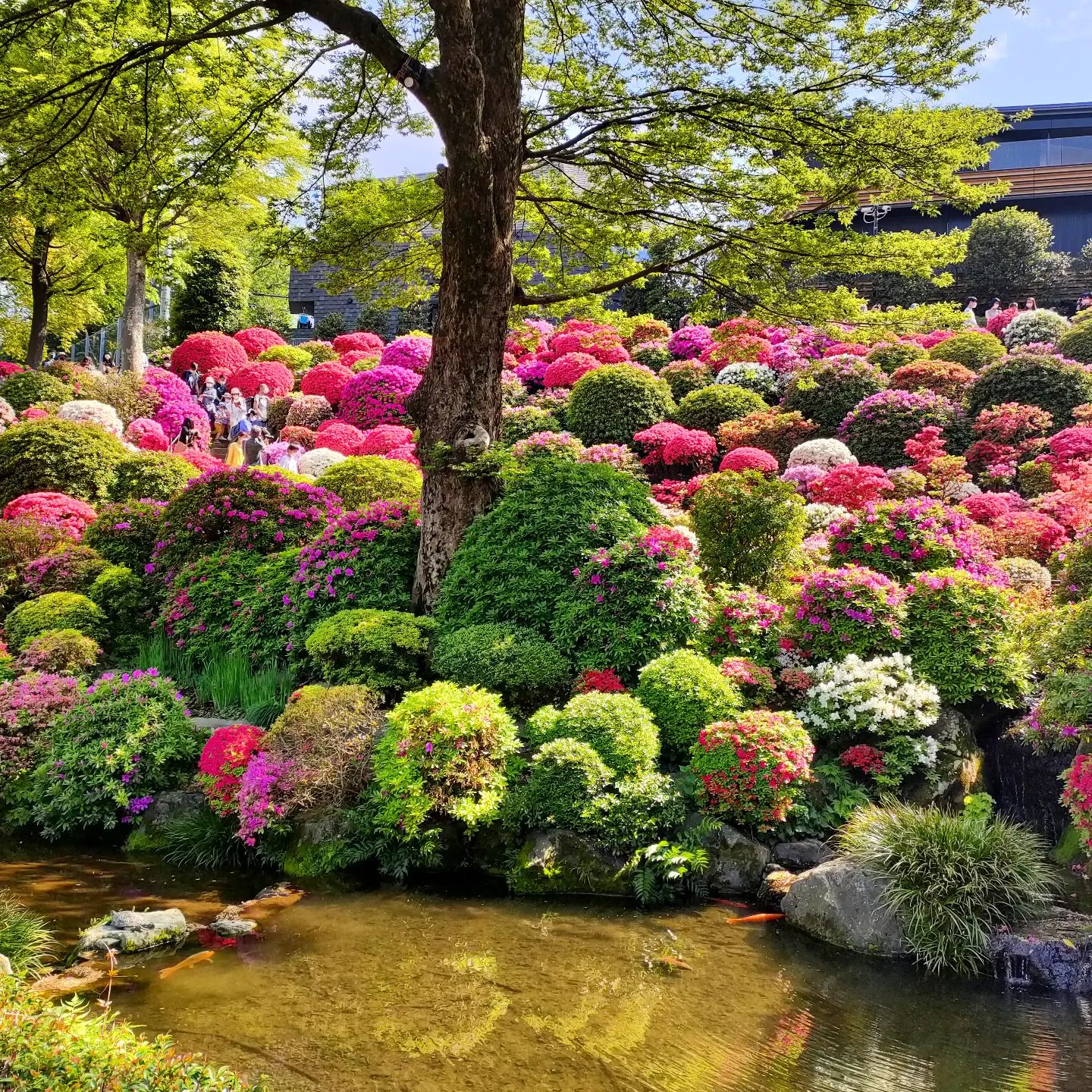
The hotel room is small with typical western furniture and decoration. I would have liked to say goodbye to Japan enjoying a Japanese-style room with tatami and futon, but perhaps it is better to leave still wanting to do things. Aspiring to have everything is an illusion that can lead to unhappiness and depression by not being able to achieve it, by losing it (for whatever reason) or by reaching a state of indifference and lack of interest in doing new things.
There's only one week left. Last week in Japan before I get on that one-way ticket plane back home. It saddens me since I still feel passion for Japanese culture, but on the other hand, I am also happy to be able to live again surrounded by my culture and my family. It has been almost four years that I have spent in Japan. They have flown by quickly. I have enjoyed learning new things almost every day (although the Japanese language is quite hard) and delving into their culture and traditions. I will try in the following lines to share some of that learning and observations, especially about the spiritual life of the Japanese people and how it compares with that of Westerners.
Thanks to Javier Moreno and Josep Lluis Mira for inspiring me to write about it!
Are the Japanese people religious?
The vast majority of Japanese declare themselves "non-religious." However, about 80% of the population participates in Shinto and Buddhist religious or spiritual activities, often together. They worship both ancestors and spirits (kami) at home altars and public shrines as well as Buddhas in temples. This unique mix of religions is known as Shinbutsu shūgō.
From the beginning of the Meiji era (1868-1912) until the end of World War II, Shinto became the official religion of Japan. Shinto shrines were "purified" and Buddhism was persecuted, accused of being a foreign religion. Today, clearly differentiated Buddhist temples can be seen, although traces of syncretism remain.
Shinto (神道 Shintō) means "the way of the gods", and is an animistic polytheistic system that has thousands of kami deities. The kami are deities of nature, for example, the sun, the sea, trees, rice and even sounds. This religion originated in Japan and is almost exclusive there.
There are a few sacred texts, some of which are the Kojiki and the Shoku Nihongi.
Another important aspect is that there are many schools, groups, sects and religious movements derived from Shintoism.
At some point it seems that the topic has gotten a little out of hand, coming to have some of the most diverse kami, such as the god of the toilet, the god of sudden death, the god of the poor, the god of opportunity or the god of epidemics. Better that you see the video that Nekojitablog has prepared about the rarest gods in Japan for your delight. Don't forget to enable the subtitles:
Buddhism was born in India and is a religion based on Buddha's teachings and the hope of achieving Enlightenment by breaking the cycle of reincarnations. It was imported to Japan from China during the 6th century. Within Japan, various schools and trends began to emerge, starting with Mahayana Buddhism, however, the trend that prospered in Japan and caused an impact on the Japanese culture is Zen Buddhism (禅).
The Japanese word for religion is shūkyō which comes from shū "sect" and kyō "doctrine", that is, sectarian doctrine, so it can have a pejorative connotation. That is why most of the Japanese claim not to belong to any religion. However, if they have to define themselves with any religion, they would probably prefer to do so with Buddhism, since it is an established religion in the West with a similar status to Christianity or Islam, while Shintoism may be more misunderstood as something "pagan" or superstitious.
Due to the characteristics of each religion and its emphasis, Shintoism, for example, practically does not mention anything about life after death and focuses on life. In addition, the dead are taboo because they make "dirty" the place, while Buddhism attaches great importance to having a good or auspicious rebirth in future lives.
A common phrase in Japan is that the Japanese are "born Shinto and die Buddhist" because it is common for young children to be presented at Shinto shrines (by tradition at 13 days old) but almost all funerals are held in Buddhist temples
Therefore, we can say that the Japanese follow Shinto for ceremonies related to the main stages of life (births, weddings) or for family or personal prosperity (financial success, love, career, etc). While Buddhism is left for funeral ceremonies or linked to personal piety to achieve Enlightenment. In any case, in their houses, it is normal to find a small Shinto altar, near a statue of Buddha.
Differences between Shinto shrines and Buddhist temples
In Japanese, Buddhist temples are called tera or dera (寺), like Kiyomizu-dera in Kyoto, or added the suffix -ji, for example Kinkaku-ji (the golden temple). Shinto shrines are called jinja (神社), such as Ujigami-jinja, taisha (Fushimi Inari Taisha), jingu (Heian-jingu) or the suffix -gu (Tosho-gu) is added.
Shinto shrines
The main difference between a Buddhist temple and a Shinto shrine is in the access to the place of worship. Shintô shrines always have a torii 鳥居 (sacred gate), most of the time red, which delimits the passage from the profane world to the sacred world of the kami. It is good manners to bow slightly before going through the torii and enter the gate from the side, as the centre is reserved for the kami (gods) to pass through.
On the trip I made last year to Naoshima (an island with many art museums), I came across a torii in the middle of the beach. No one knows why the torii gate is so far from Ebisu Shrine (the God of luck), but what people do know is that if you place a stone on top of the gate, your prayer has a very good chance of coming true!
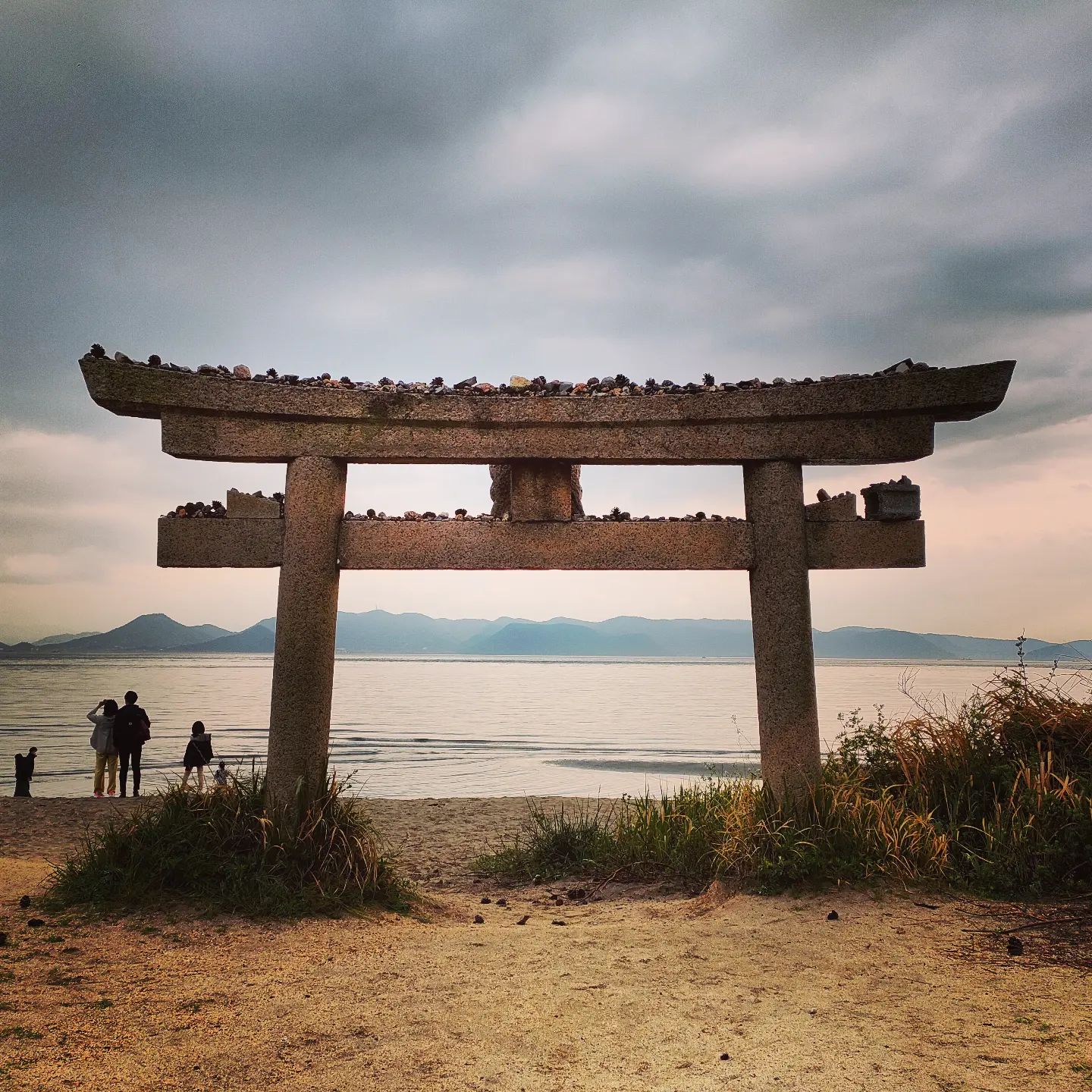
In 2014 I also visited the famous island of Miyajima, near Hiroshima (one of the places where the atomic bomb was dropped). There is a very nice torii in the middle of the sea. Sometimes the tide is low, so make sure you take the photo at the right time! In recent years they have been making repairs and improvements, but they are already finished, so prepare the camera if you plan to visit it.
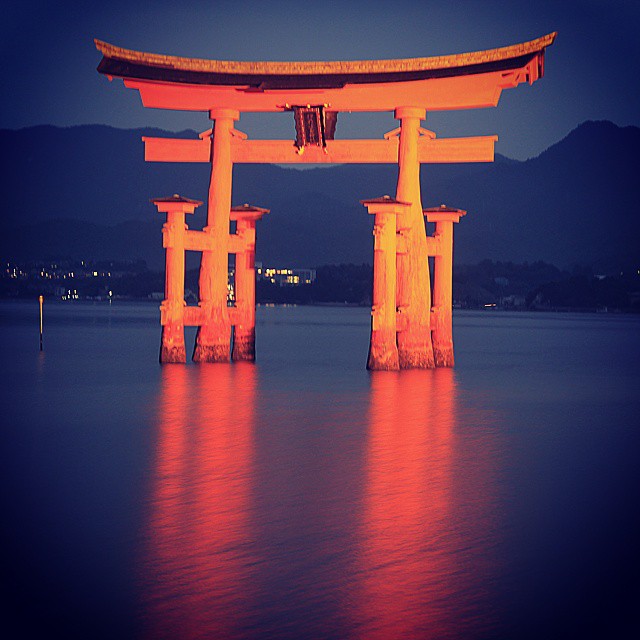
At the entrance, it is also common to find a shimenawa (標縄/注連縄/七五三縄), a thick rope of rice straw and shide (紙垂, 四手), a zigzag-shaped paper streamer used by Miko priestesses for purification and blessing.
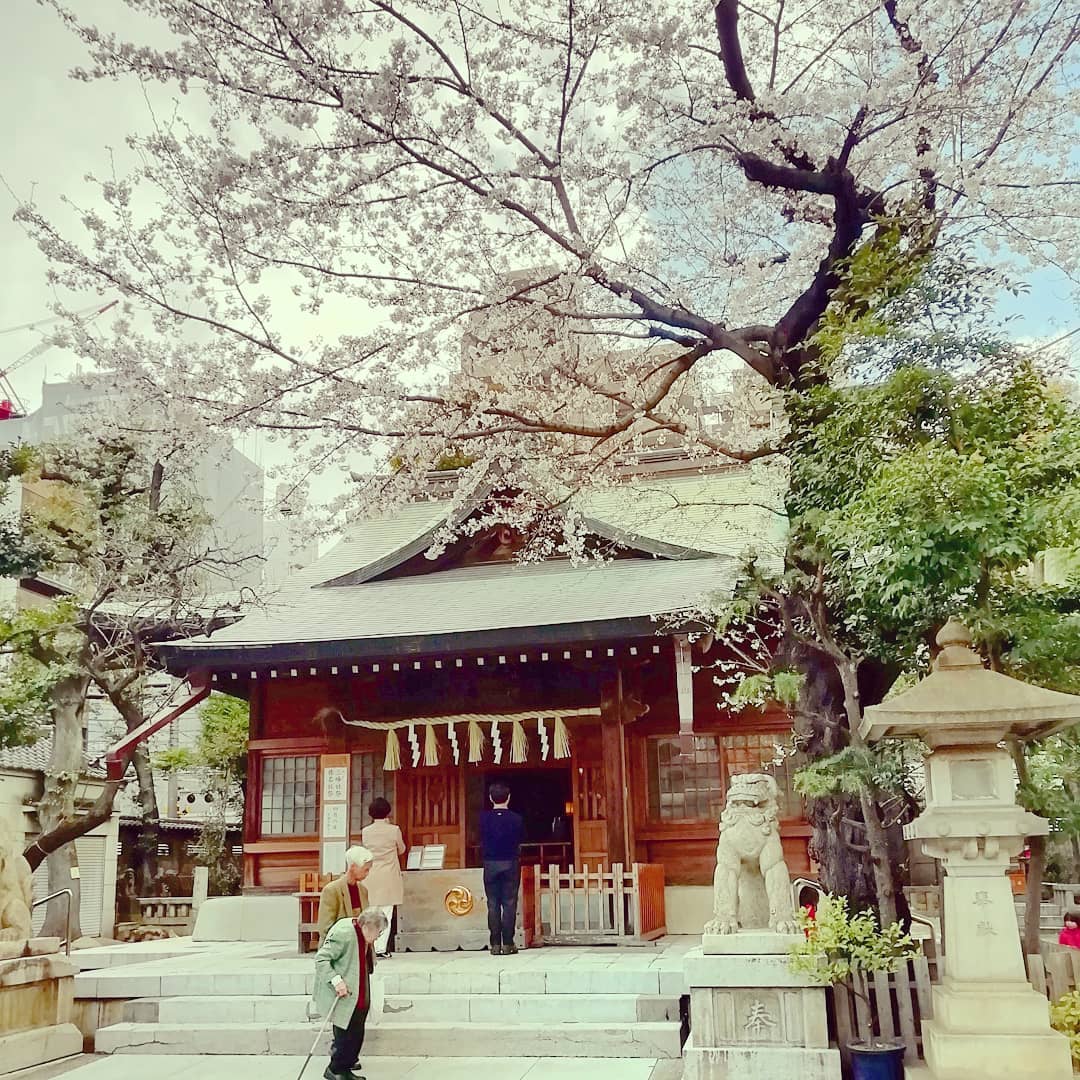
After crossing the torii, there will be a small stone fountain with one or several small ladles (usually made of bamboo). This area is called chôzuya (手水舎) and it is where the visitors wash their hands and mouths to be free from any spiritual contamination. The correct process for the washing ritual is as follows:
- Take the ladle with your right hand and wash your left hand with a little water.
- Take the ladle with your left hand and wash your right hand.
- Take the ladle with your right hand and use it to put water in your left hand.
- Use the water in your left hand to rinse your mouth well. DO NOT drink the water directly from the ladle!.
- Wash your left hand again with the ladle.
- Put the ladle vertically so that all the water falls before putting it back where it was.
The act of purification before visiting these sacred places is very important.
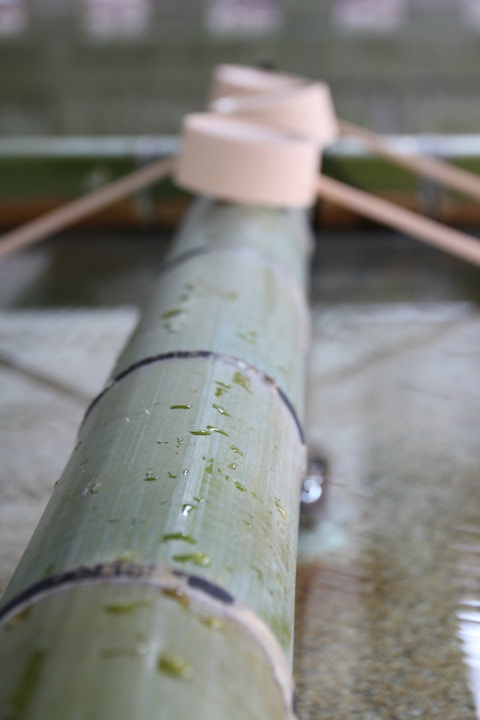
The Shinto shrine is mainly made up of two buildings. The haiden (拝殿), where the ceremonies are held, and the honden (本殿), a closed building reserved for the kami and the objects that personify them. The two buildings are sometimes connected to each other and surmounted by gables.
Once you have already washed and purified yourself, you can head to the main building. There is usually a small queue of people waiting their turn to pray. When your turn comes, do not stand in the centre (for the same reason as in the torii). Stand aside and take a bow. If there is a bell, ring it. In this way, you inform the Gods that they have visitors. Put your offering in the offering box without making a lot of noise. The 5 yen coin is the best choice because its name resembles the word bond, as in a relationship. Then do the following:
- Two bows
- Two claps with your left hand a little higher
- One bow
- Put both hands together and if you want, close your eyes
- Do your prayer. Normally it lasts between 10 and 30 seconds.
- When you finish the prayer, make one last bow and that's it
Within the shrine compound, you will often come across small wooden plaques hanging. They are called ema and in them, the visitors write their wishes and pray to the kami of the sanctuary to fulfil them. For example, at the time when the university entrance exams are held, shrines such as the Yushima Tenjin, in the Tokyo district of Bunkyō, and the Dazaifu Tenman, in Fukuoka, are filled with ema with messages asking to pass the exams.
'Well-being for the family', 'Prosperity in business', 'Good health' and 'Success in love' are some of the messages that people often write on emas. 'Passing the exams' is what students usually ask for at the 12,000 shrines throughout Japan dedicated to education-related deities. One of them is Dazaifu Tenman, in which the academic Sugawara Michizane, considered a god of studies, is venerated. People choose the sanctuary or temple whose deity suits the wish or request that they want to carry out. Once in the enclosure, an ema is bought, the message is written and it is hung in the corresponding place.
There are no rules on how to write in emas. However, the face on which a drawing appears corresponds to the front; the wish or request is written on the back, along with the name, address and other personal information, although it is not necessary to put the name if one does not want to. The ema can be hung in the sanctuary, but it is also possible to make the offering at home. An ema costs between 500 and 1,000 yen.
If data protection agencies in Europe are so concerned about cookies on the Internet, I wonder what they will think about these very personal and public messages!...

Via Nippon.com I found out about the origin of the ema:
In ancient Japan, it was believed that the gods travelled to the human realms on horses. In the Nara period (710–794) people dedicated horses to temples and shrines. As the practice developed, pictures of horses on wooden tablets were substituted for real animals. The kanji for ema are 絵馬, meaning “picture” and “horse.”
Today, ema designs are not limited to horses, and often have a picture of the year’s eto, or zodiacal animal. The system of associating a different animal with each year in a 12-year cycle came from China during the sixth century. In Japan, the animals (in order) are the rat, ox, tiger, rabbit, dragon, snake, horse, sheep, monkey, rooster, dog, and boar.
Examples of Shinto shrines:
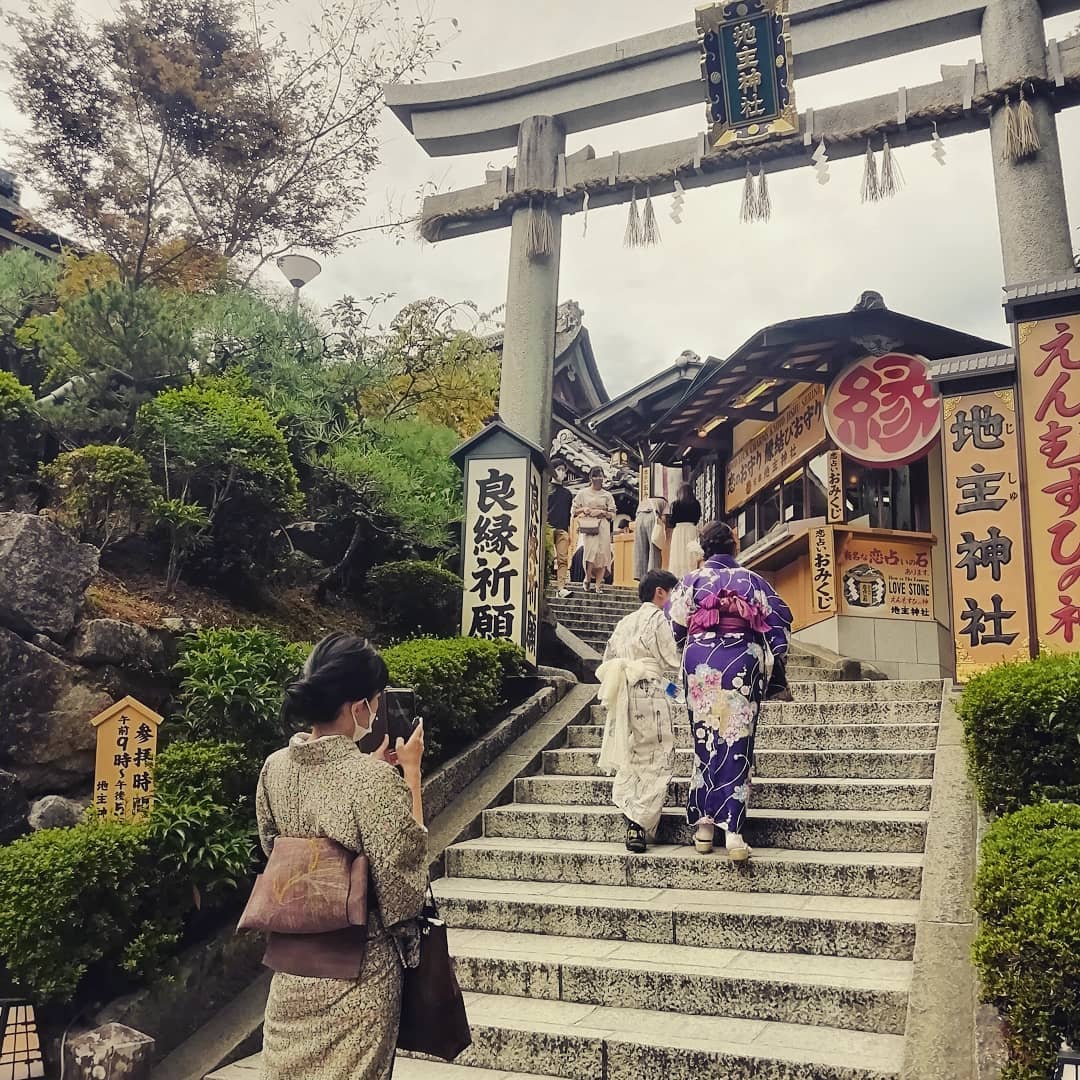
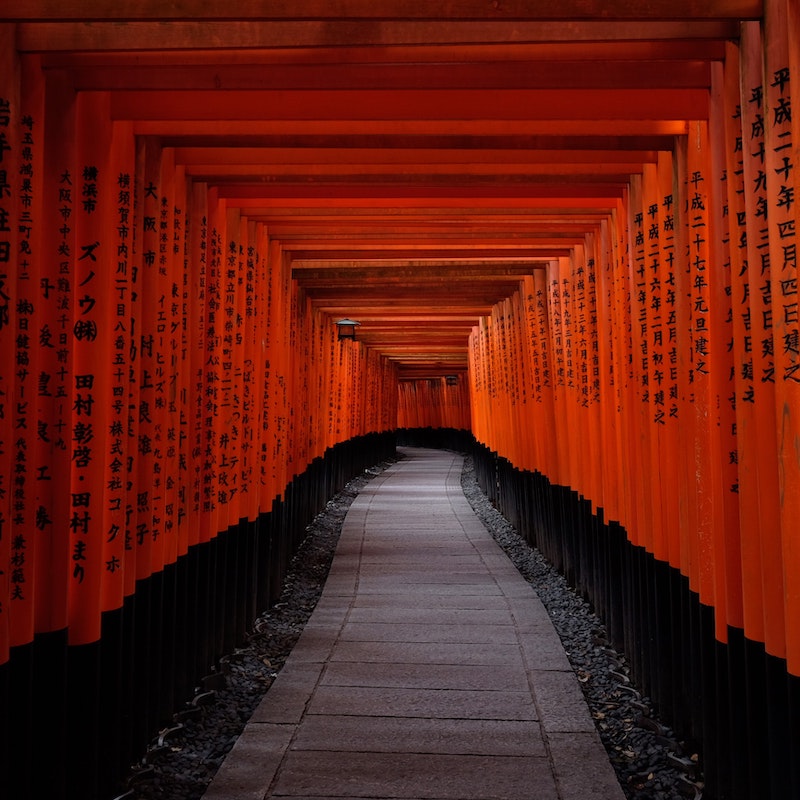
Buddhist temples
The entrance of Buddhist temples usually has a large gate with a roof called Mon. The suffix -mon is also often used to designate doors, for example, "omote-mon" (main door). Often, on the sides of the Mon, we will find the protective deities Niō (仁王).

The Buddhist temple is made up of several buildings. The most important is the kondô, also known as Butsuden, Butsu-dō, konpon-chūdō, and hondō (the golden hall). It's where the cult statue is.
Another very easy-to-recognize building that indicates that it is a Buddhist temple is the pagoda. It is an evolution of the Indian stupa. In Japanese, it is called tô and it can have three to five stories.

Different-sized statues representing Buddha, or bodhisattvas, are also very present in the complex. Buddhist temples usually have a garden (a dry garden in the case of the Zen branch), usually lit by stone lanterns Tōrō (灯籠 or 灯篭, 灯楼).
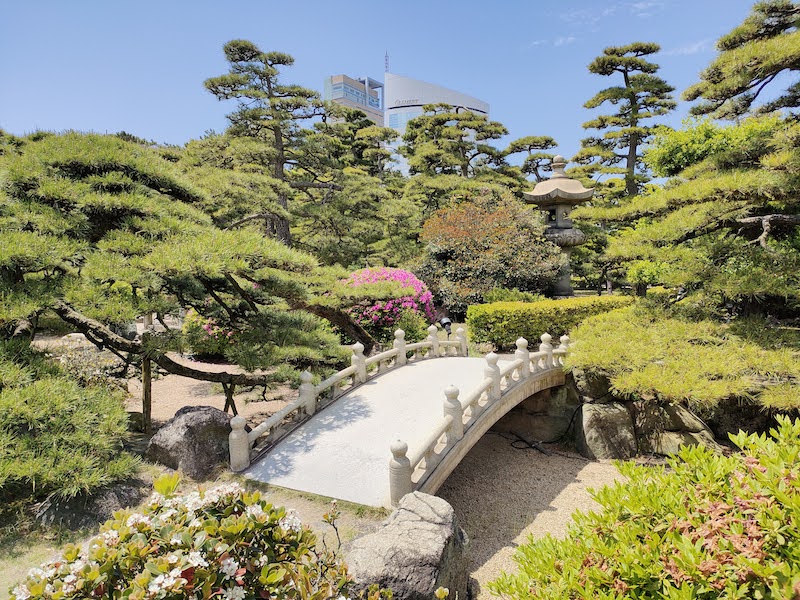
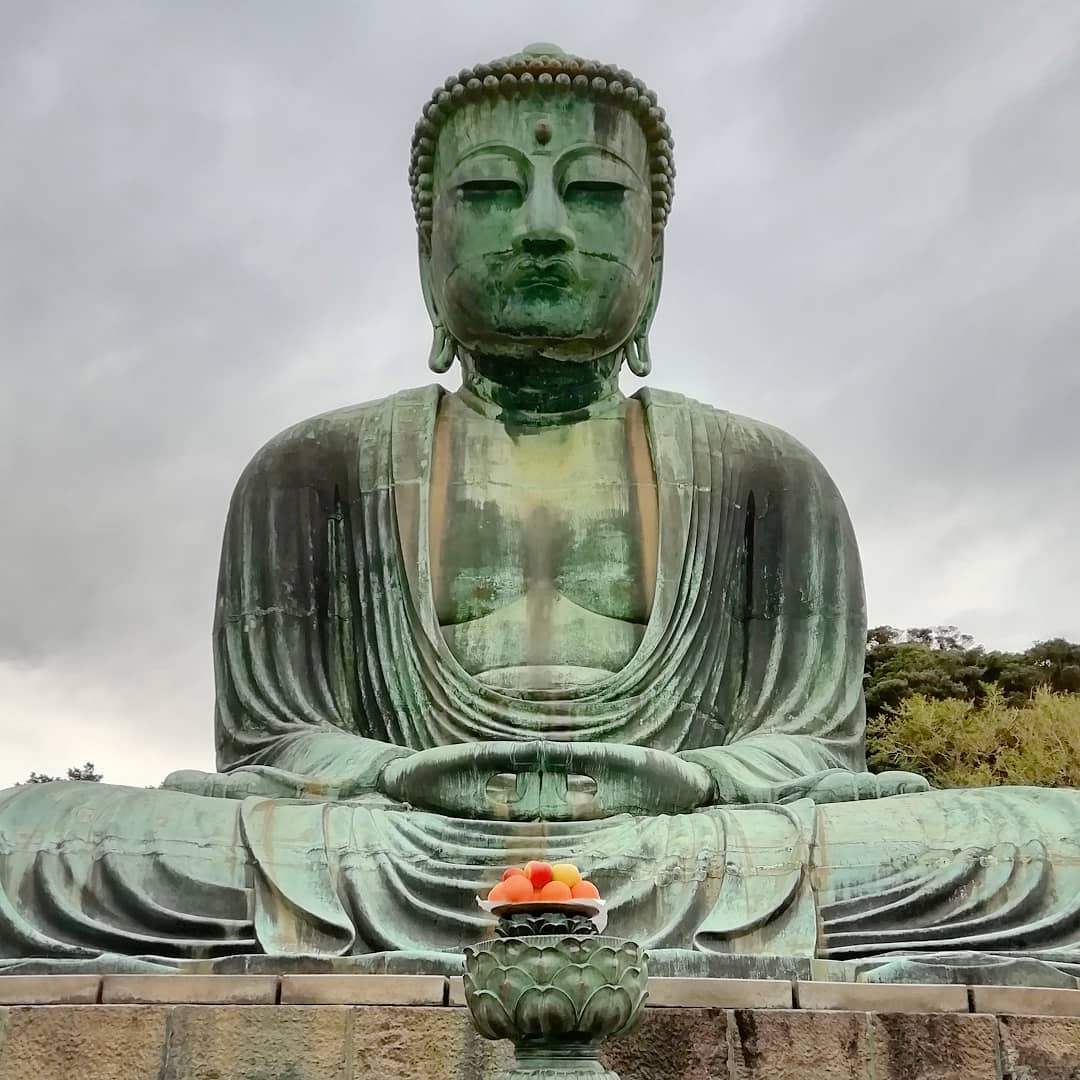
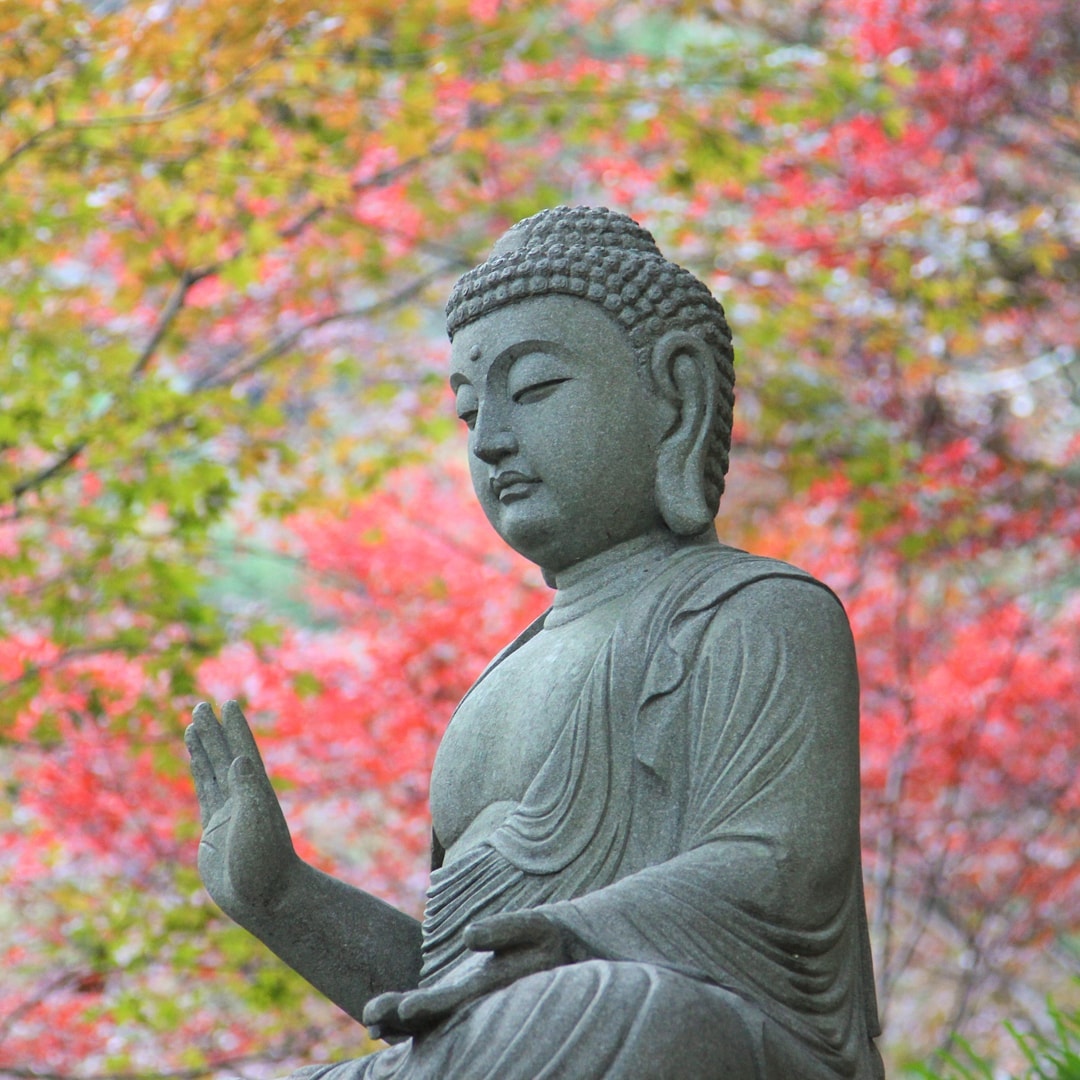
When I went to Nikko (north of Tokyo), I visited the Tōshōgū Shrine (東照宮). It is a spectacular memorial to Tokugawa Ieyasu, the shogun who ruled Japan for 250 years until 1868. Both Shinto and Buddhist elements can be found in the shrine, which was common until the Meiji era.

Another of the typical rituals in Buddhist temples is to burn an incense called Osenko (incense sticks). In particularly popular temples, this ritual of burning incense can produce quite a bit of smoke, so don't be too alarmed. Some people like to blow smoke into their faces. This is because the smoke is believed to possess magical healing powers.
If you decide to buy a pack of incense, do not light it using others that are already lit, as it is considered a symbol of taking on the sins of others.
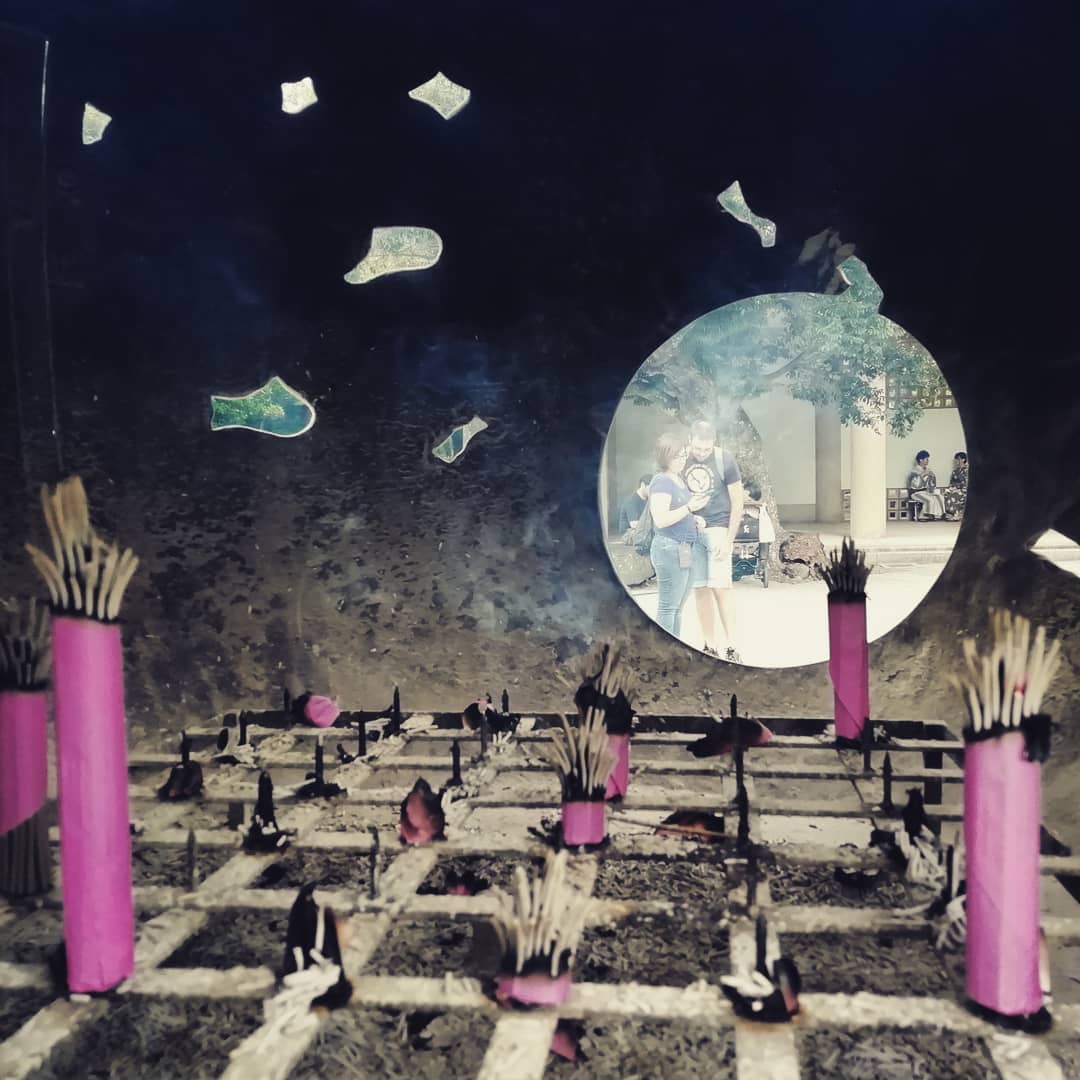
Examples of Buddhist temples:
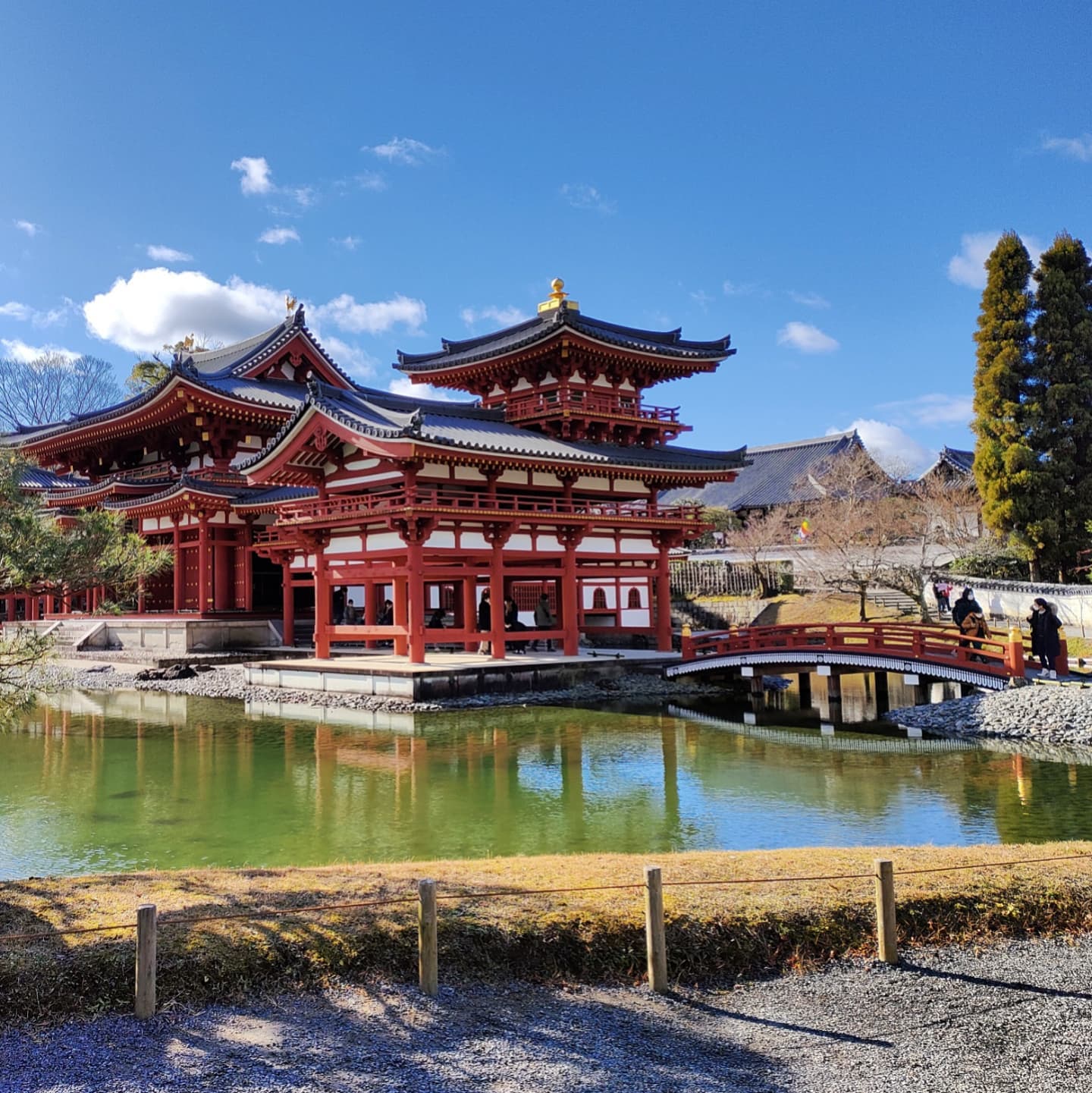
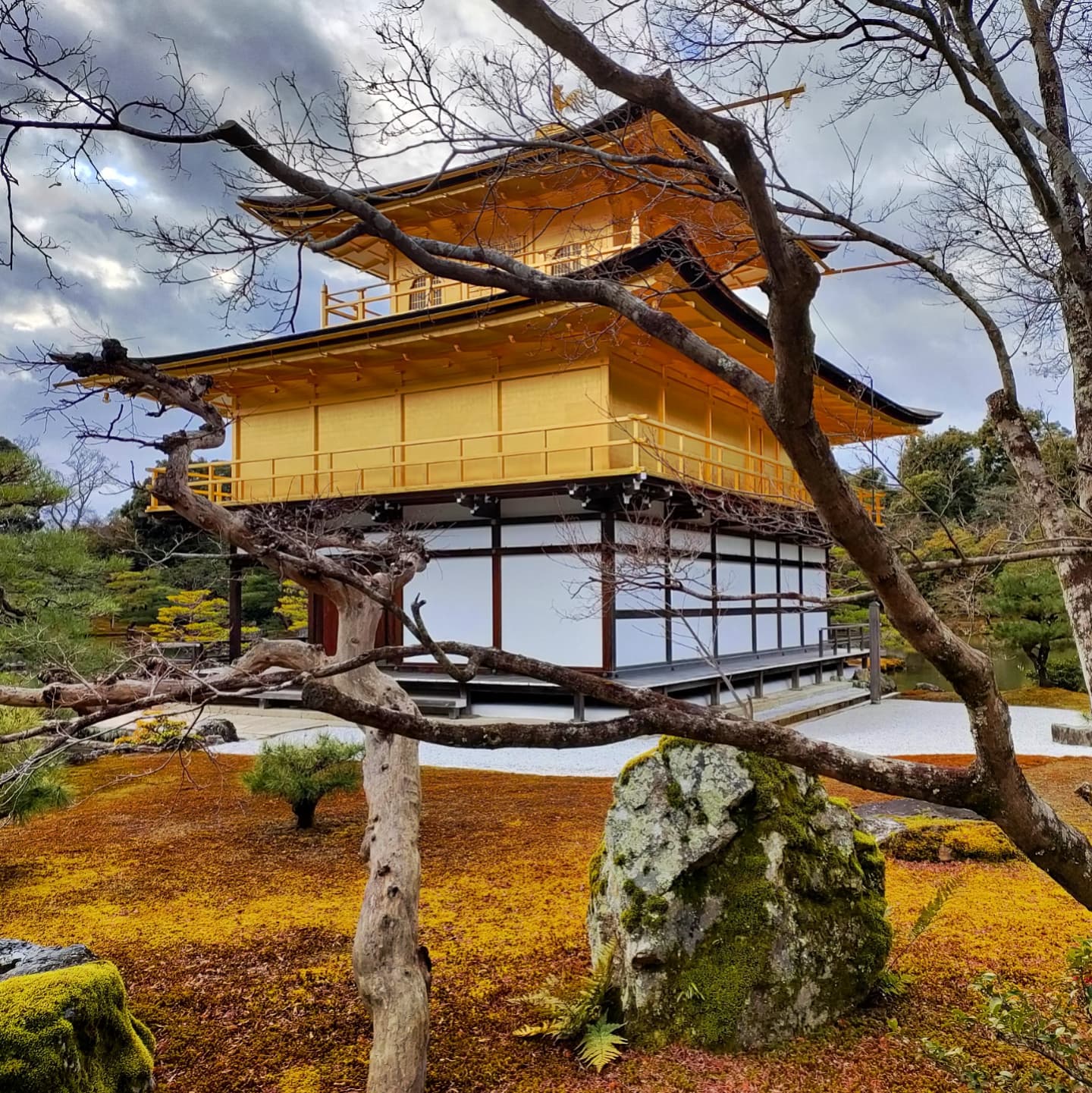
Other spiritual activities and customs
The omamori
One of my favourite things to do when visiting a shrine or temple is to buy a Japanese amulet. They are called omamori and provide various forms of luck and protection. The most interesting I bought provides protection on the road, to avoid traffic accidents. They usually cost between 500 and 2000 yen, although there are more expensive ones.
The word omamori (守り) means "protection". Originally they were made of paper or wood, but nowadays they are small items that are generally kept inside a few small brocaded silk bags and may contain a prayer or religious inscription.
The omamori become sacred through the use of rituals. They are also a form of donation from visitors to the temple or sanctuary. They are also often used as a gift to wish a friend, colleague or family member good wishes or to ward off bad luck. They are often seen in handbags, attached to mobile phone straps, in cars, etc.
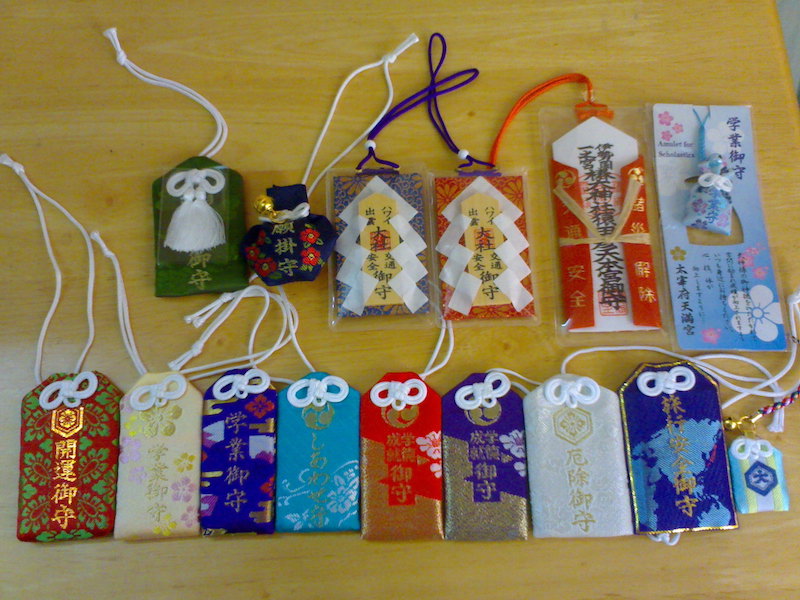
Forest bathing and power spots
Another of my favourite activities is practising shinrin-yoku (forest bathing) and visiting the power spots. In 1982, the Japanese Ministry of Agriculture created the term shinrin-yoku, which translates as "forest bathing" or "absorption of the forest atmosphere". It's simply about spending time in nature, using the term bathing as a metaphor. No need for strenuous walks or runs. The goal is to live in the present moment while immersing your senses in the sights and sounds of a natural environment.
This practice also helps reduce blood pressure, heart rate, and levels of harmful hormones, such as cortisol, which the body produces when we are stressed. This can help put us in a calmer and more relaxed state. Certain studies have found that simply spending 10 to 20 minutes a day outdoors can increase well-being and happiness, and decrease the amount of stress.
During one of these walks through the woods, we may come across a power spot. It is like a spiritual place, where you can feel in tune with nature or the surrounding elements. Sometimes it is a big power spot, like a very important temple and other times it can be a tree, a waterfall, a mountain, a lake or something related to nature. The point is that you will normally feel a different spiritual or magnetic energy when you are near that power spot. You don't have to be a shaman to feel it...
In other countries, there are also sites with special energy, for example Sedona in the United States, Stonehenge in the United Kingdom and Uluru (Ayers Rock) in Australia. In Japan, there are people who have written books and lists with the best power spots in the country.
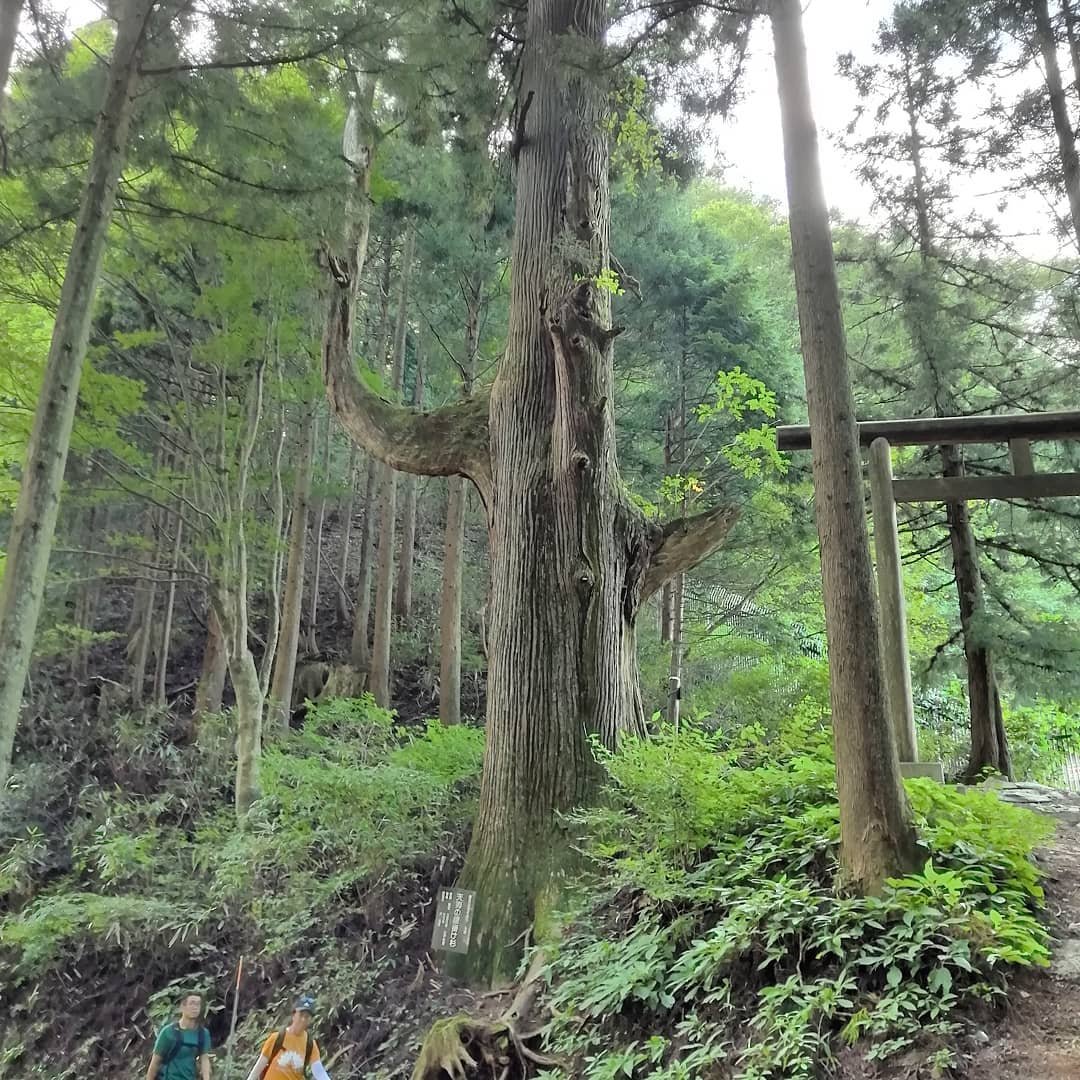
The hatsumode
Via Nippon.com, I learned that there is a custom called hatsumōde which consists of visiting a Buddhist temple or a Shinto shrine during the first days of the year to ask if they will have good luck during the next twelve months. The ritual consists of consulting a kind of oracle that offers its messages in writing. It is about the omikuji. Some of the results may be:
- Kichi: good luck
- Kyō: bad luck
- Daikichi: very good luck
It is believed that omikuji began to be used in the Edo period (1603-1868). Its origin would go back to the custom of consulting the divine will when deciding who should govern the country, who one should marry or who should be his successor.
The process consists of going to the corresponding counter and paying the amount of the omikuji. It is usually between 100 and 200 yen. Then, from a wooden box or cylinder, a toothpick is drawn on which a number is inscribed; This corresponds to the message that will determine the good or bad luck of the bearer. In addition to the different degrees of fortune, the strip of paper contains information on aspects such as love, health and studies. If a message of good fortune is obtained, it can be kept, for example, in the wallet, but in the event that the result has been bad, the strip of paper is tied to a tree or plank in the sanctuary with the aim of praying to the gods that change our luck.
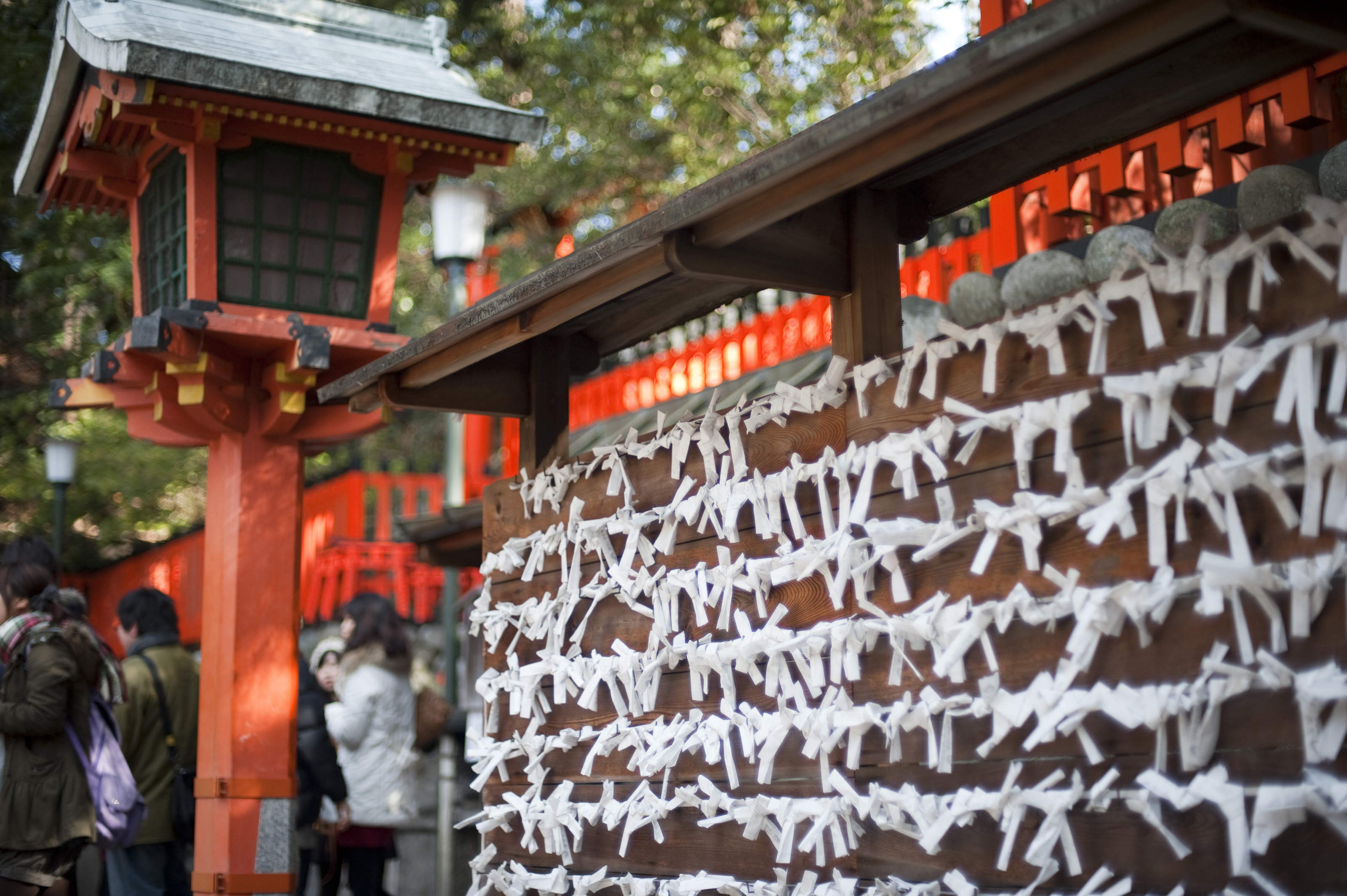
There are more and more types of omikuji available. For example, there are specific ones to find out what the destination has in store for us in matters of love, or with explanations in English or Chinese for foreign tourists. We can also find original formats, such as cat-shaped ceramic figurines and wooden daruma; the messages would come inserted inside. Even if the result is bad and the strip of paper is tied to a tree, there is always the option of keeping the figurine or amulet as a travel souvenir.
They say that during the Kamakura period (1192-1333) when the farmers did not agree on the order of irrigation of the rice fields or the fishermen could not reach an understanding on the allocation of the fishing grounds, they wrote their names on a small piece of paper and commended to the gods; They performed a purification ceremony before taking out the pieces of paper one by one to make a decision. Since ancient times, there has been a belief in Japan that both Shinto and Buddhist deities are fair, just like coincidences, which is why omikuji were also used as an instrument to unify communities without complications.
The Setsubun
On February 3, the spring setsubun (節分) is celebrated. In association with the Chinese New Year, it can be considered a type of New Year's Eve and is also accompanied by a special ritual to cast out all the evil of the previous year and drive away demons in the new year. This ritual is known as mamemaki, which means scattering beans.
The mamemaki is usually performed by the toshiotoko of the house, for example, the man who was born in the corresponding animal year of the Chinese zodiac, or the head man of the house. A particular type of soybean called irimame is thrown at the door or at a family member wearing an oni mask, while the throwers say "Oni wa soto! Fuku wa uchi!'' (鬼は外福は内). The literal meaning of the words is "Away with the oni, bring in good luck!" The seeds are thrown symbolically to purify the house by casting out evil spirits and driving away bad luck and ill health with them. Then, as part of bringing good luck, it is customary to eat the soybeans, one for each year of life, and in some places, one for each year of life plus one for the coming year as good luck for that year.
New Year's Eve and Japanese New Year
The oshogatsu (正月) is the most important holiday in the Japanese calendar. In ancient times this date coincided with the Chinese calendar, at the beginning of spring; but since 1873 this date was adjusted to the Gregorian calendar and therefore coincides with January 1.
Preparations begin at the end of December. The houses are decorated traditionally: a sacred rope of straw (shimenawa) with hanging strips of white paper (shide) is placed over the front door to prevent evil spirits from entering. It is also typical to put kadomatsu which are decorative pine trees that represent longevity. It must be put on December 14 because after that date it is forbidden to go to cut pine trees in the mountains. This decorative tree remains until January 14.
The celebration lasts about three days and people spend most of the time with their family. It is customary to play traditional games and eat dishes specially prepared for the celebration. On December 31, a deep cleaning of the houses (ōsōji) is also organized to welcome the new year and not continue to have impure influences.
During the celebration the seibo are delivered, gifts are chosen for those people from whom help was received during the year, and on the first of January, all the New Year's greetings letters that were kept in the post office are delivered to be distributed in a special shipment each year.
It is also very important to pay off debts before the end of the year and eat toshikoshi-soba in the hope that family fortunes will spread like long noodles.
On New Year's Eve (大晦日 Ōmisoka) many people visit Buddhist temples to hear the bells ring 108 times at midnight (joya no kane). The reason they are struck 108 times is the Buddhist belief that human beings are plagued by 108 earthly desires or passions (bonnō), dissipating one with each strike.
The Obon and the Hanabi
The O-bon is a festival of worship to the ancestors that takes place in July or August. It is a semi-religious tradition that honours the spirits of deceased ancestors. This custom of Buddhist origin has ended up becoming part of the culture of Japan, not only in religious and cultural aspects but also as an occasion for social interaction with the community. It has been celebrated for 500 years and traditionally includes dances and dances such as Bon Odori, or festivals such as Gozan no Okuribi.
The end of Bon Odori is marked with the celebration of tōrō nagashi. Small paper lanterns with lit candles inside are floated down rivers and shorelines to point the way for the ancestral spirits when they leave. A message is usually written on the outside of the paper lantern.
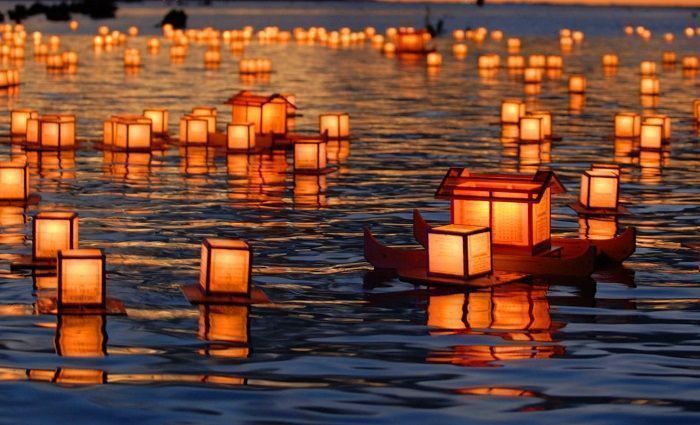
During these months the Hanabi (花火, はなび) is also celebrated, formed by the characters "flower" and "fire". They are fireworks displays that light up the sky in all regions of Japan. People usually attend them wearing yukata.
Christianity in Japan
Via Wikipedia, we know that Christianity is also very present in Japanese culture. It came in 1549 from the Spanish missionary Francisco Javier, and was spread by European missionaries, especially by Jesuits; these were known in Japan as Kirishitan (切支丹).
At first, the Japanese authorities supported the presence of religion as a way to counter Buddhism; However, soon after they saw that the Europeans were conquering territories in Asia based on religious conversion and saw them as a threat. Thus, at the beginning of the Tokugawa era, in the 17th century, Christianity was banned for two centuries until the Meiji Restoration, when Christian missionaries were allowed to arrive.
However, during World War II Christianity was outlawed in all its forms. Since 1947 it has been considered a free religion to practice, and currently consists of 1% of the Japanese population, even though the majority celebrate holidays of Christian origin such as Christmas or Valentine's Day.
When it's time to get married, most Japanese prefer to do it at a shrine with a Shinto priest and a traditional ceremony. The groom usually wears a Japanese wedding kimono and the bride wears a white bridal kimono called uchikake with a white headdress. In other cases, the bride and groom prefer to get married in a church with a Christian priest, although more than out of faith, they do it because it is fashionable. It may also be the case that the couple celebrates two ceremonies, one Shinto and the other Christian.

Conclusions
The concept of religion in Japan is quite different from religion in Western culture. Spirituality is quite eclectic and the prayers and rites are more focused on achieving well-being and worldly benefits than on following doctrines or beliefs.
Without having a great knowledge of any particular religion, the feeling I have on a superficial level is that the Japanese are quite superstitious and practice their spirituality in a healthy and light-hearted way, without the rules that you see in Islam or Christianity. There is no obligation to go to the temple or pray every x day. Each one does it at their own pace when it seems right and they are not judged for it. There is also no feeling that you are going to be punished by going to hell. In Japan, everything seems much more pragmatic and simple. Go to the temple, make an offering, prayer and you are done. Surely the monks of the temples and shrines will have a lot of spiritual activities and sacrifices, but the Japanese folks who visit these temples and shrines do not seem to spend much time praying.
Also, many of the rituals are quite aesthetic and easy to follow. Washing your hands and mouth, breathing incense, clapping your hands, bowing, throwing beans, eating this or that... The act of purification seems to be something more physical and in contact with nature. In Christianity and Islam, it seems that the followers have to do more work (physical and intellectual) to practice the faith and have a healthy conscience.
Does religion condition the good behaviour of people?
In the West, there is a belief that religious people (not extremists) are usually "good people". The classic stereotype of the family that attends church every Sunday and interacts with the community, participates in social activities, reads the Bible, etc. Perhaps today that image has been diluted a bit, but it is still quite significant. The ethical principles and behaviour of Christians (practising or not) are also usually based on the 10 commandments.
In the East and more specifically in Japan, the concept that prevails the most to define the good behaviour of the Japanese is the Wa. To explain it, no one better than the author of the book "Wa. The Japanese Way of Harmony".
Wa means harmony, but like all Japanese words it evokes much more. Wa is, in fact, everything that is soft, serene and moderate, but it also refers to everything that is Japanese. Wa is a prefix that applies to both things and concepts. Through wa, Japan teaches us its best lesson: beauty, joy and civility are built with a large dose of commitment, through continuous work on oneself, exercising patience, doing things carefully and never at the expense of others. others, because truly lasting happiness is everyone's project and never just one. — Laura Imai Messina
Therefore, in Japan, maintaining harmony, avoiding conflict, and getting along with others are of paramount importance, as it is a relatively small island with 130 million people on it. That is why social phenomena such as [honne and tatemae permeate the daily interactions of the Japanese and contribute to facilitating harmony.
Regarding how religion influences their behaviour, it should be noted that in Buddhism there is no divine being that decides who goes to heaven or hell. On the contrary, they believe in divine justice or invisible energy called karma, which is generated from the acts of people and punishes us when we do something bad or blesses us when we do something good.
I came up here. If you want to share an opinion or think I have forgotten something that deserves to be included, please write a comment. I will be very happy to improve the entry with more information.
In the next blog post, I will talk about Japanese aesthetics.